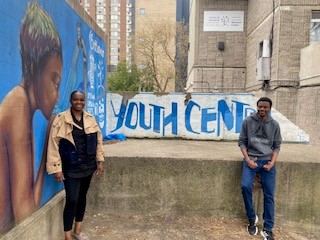Letting Lowertown grow: a future rooted in strength
By Josiah Frith
I grew up understanding that the best things in life take time. My father, a municipal politician on British Columbia’s Sunshine Coast in the 1980s, worked to preserve old-growth forests. He taught me that these forests were not just collections of trees, but thriving, self-sustaining ecosystems.
Their strength came from their history, their deep roots, and the balance they had developed over centuries. If destroyed, they could not simply be replanted and expected to return overnight.
He also believed in the beauty and strength of heritage buildings and the communities that grew around them. That belief shaped my own life. Nearly 30 years ago, I chose to put down roots in Lowertown, buying a historic home in a neighborhood that had evolved naturally over generations. I’ve lived and worked here ever since, watching as the long-term effects of past planning decisions became clear, and as more recent attempts to “fix” things have often made them worse.
But I’ve also seen something else: resilience. Just as a forest has the ability to recover if given the right conditions, so too does a neighborhood. Lowertown is not beyond saving – far from it. Its history, architecture, and people still provide the foundation for something strong. But to bring it back to health, we have to stop imposing artificial solutions and instead restore the natural balance that once made it thrive.
A neighborhood that took time to grow
Lowertown was not built all at once. It grew organically, with families, businesses, and institutions forming a tight-knit community. The ByWard Market was more than a tourist attraction – it was a place where people shopped for fresh food, where butchers, bakers, and grocers supplied residents with what they needed. It was a neighborhood where you could live, work, and shop within walking distance, and where small businesses thrived because they were supported by the people who lived here.
Today, that vision is being rebranded as a “15-minute neighborhood,” a central goal of Ottawa’s 2022 Official Plan. But what the plan defines as a future aspiration, Lowertown has already lived. The problem isn’t that we lack density or walkability, it’s that we’ve lost the balance that once made it work.
That balance was disrupted by heavy-handed interventions. The widening of King Edward Avenue cut through the neighborhood like a scar, prioritizing truck traffic over community connection. The overconcentration of shelters – without adequate housing, health, or employment supports – shifted the area’s social balance without improving outcomes. And the shift toward a tourism-based economy hollowed out the Market’s function as a place of everyday use for residents.
Now, as the city prepares to spend over $129 million on a ByWard Market revitalization, we have a choice: will we restore a real community market, or will we double down on a vision that continues to serve visitors over residents?
Restoring Lowertown’s natural strength
As Ottawa undertakes major updates to its zoning and planning policies, including the Draft 2 Zoning By-law released in March 2025, Lowertown stands at a pivotal moment. These citywide tools are meant to support intensification and “complete communities,” but without care, they could deepen the very imbalances we’re already facing.
Like a forest trying to regenerate after clear-cutting, Lowertown doesn’t need replanting from scratch. It needs stewardship.
Here’s what that could look like:
1. Preserve what remains Strengthen and enforce heritage protections. Offer tax relief and grants for building restoration. Penalize neglect and incentivize adaptive reuse.
2. Rebuild the Market for residents Restore the ByWard Market as a real farmers’ market. Prioritize local food producers and vendors who serve the community, not just tourists.
3. Reinvest in the public realm Improve sidewalks, lighting, and parks. Focus less on architectural showpieces and more on everyday infrastructure that supports local life.
4. Balance the business ecosystem Prevent commercial monocultures. Support long-term, independent businesses through zoning reform, affordable leases, and small business incentives.
5. Decentralize social services Ensure services like shelters, drop-ins, and supportive housing are equitably distributed citywide and not concentrated in one downtown ward.
6. Let the community lead Real regeneration comes from within. Support grassroots initiatives, cultural programs, and resident-driven planning processes.
A future worth growing
Lowertown isn’t a failed experiment. It’s a resilient, layered neighborhood with deep roots. The planning tools being rewritten today – Ottawa’s Zoning By-law and amendments to the Official Plan – will shape how this community grows for decades. But the city must recognize that Lowertown already has the density and character other areas aspire to. What it lacks is care, enforcement, and respect.
This is a chance to do better. If we get it right, Lowertown can once again be a place where people don’t just pass through, but put down roots. A place that grows, naturally, into something stronger than ever.
The City of Ottawa is currently accepting public input on the new zoning and planning framework. This is a crucial opportunity for residents to have a say:
- Read and Comment on the Draft Zoning By-law (Draft 2): https://engage.ottawa.ca/zoning
- Join Public Consultations & Feedback Sessions: Dates and registration details are listed at engage.ottawa.ca
- Submit Comments or Questions Directly: Email: NewZoning@ottawa.ca
The future of Lowertown is being written now. Let’s make sure it reflects the strength, history, and humanity that this neighbourhood has always stood for.





